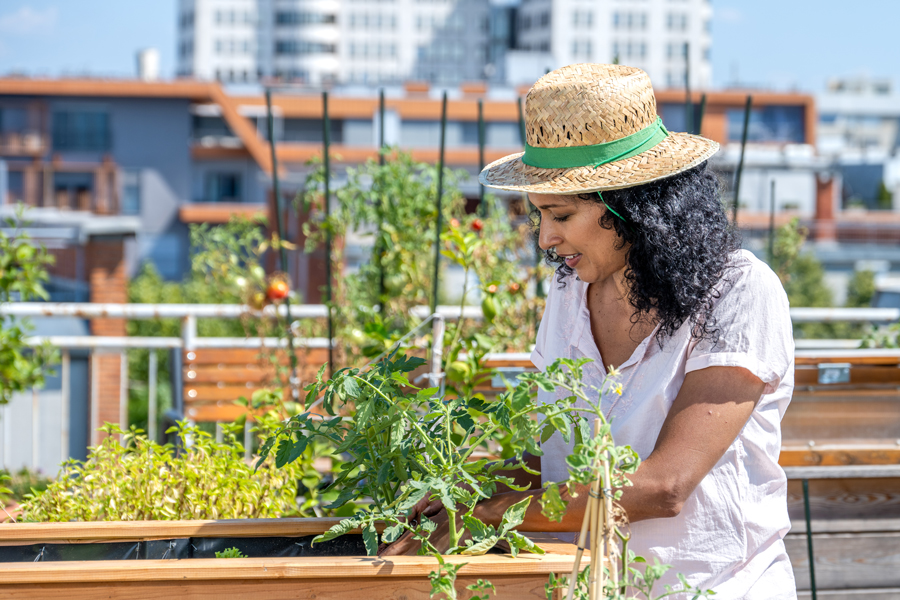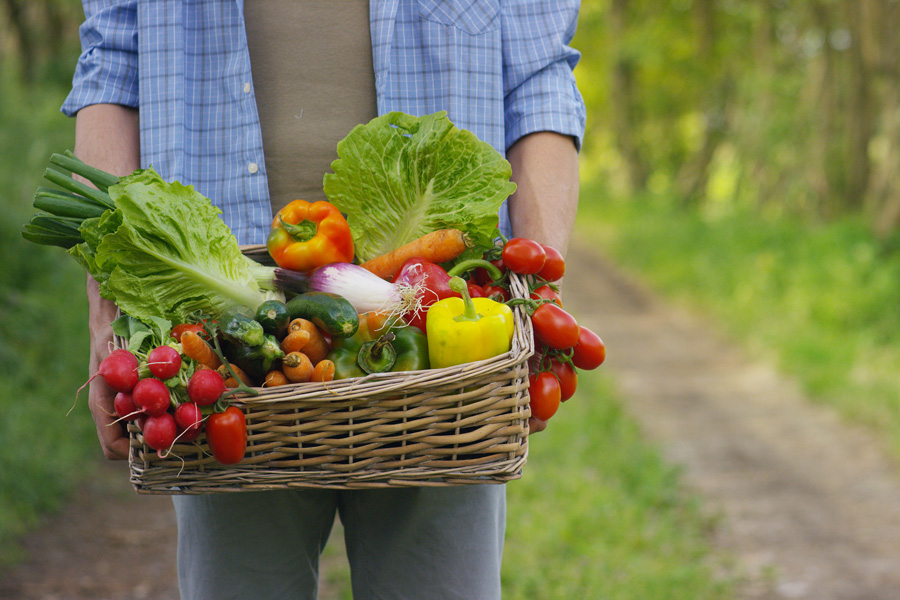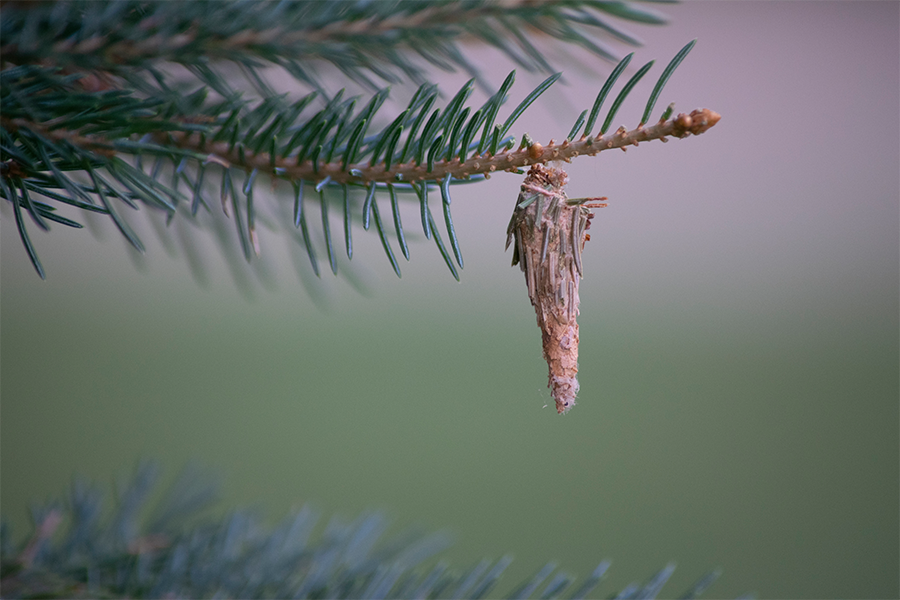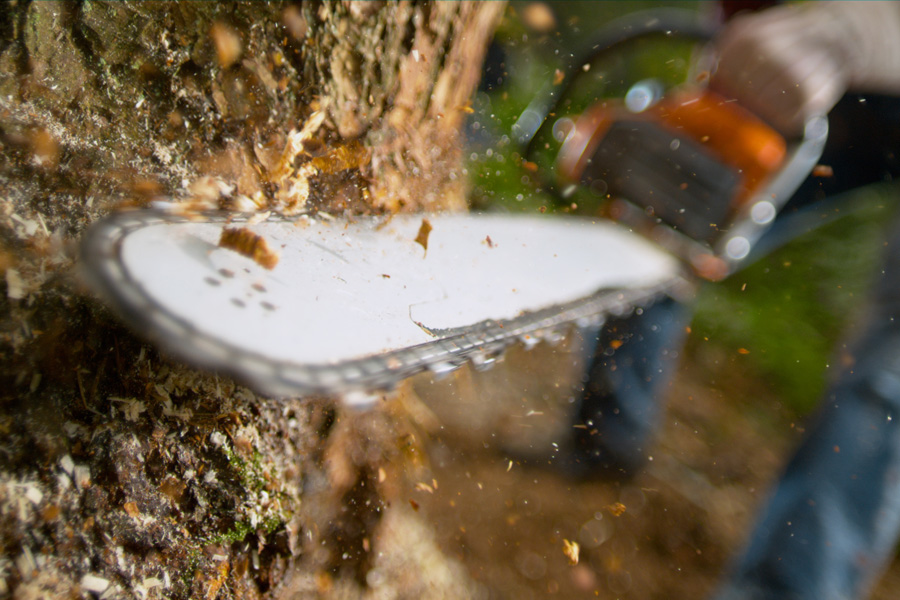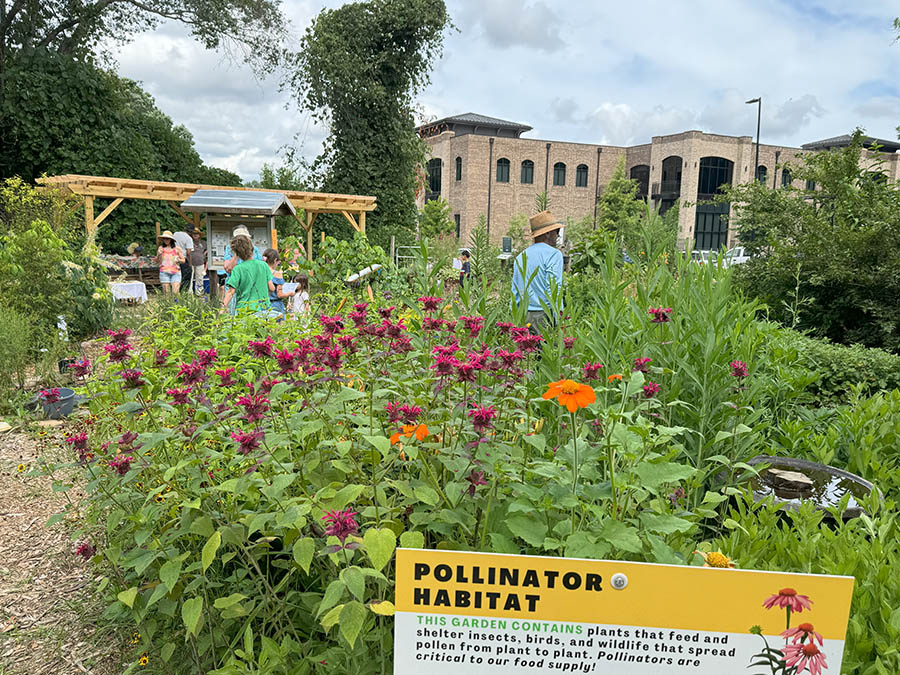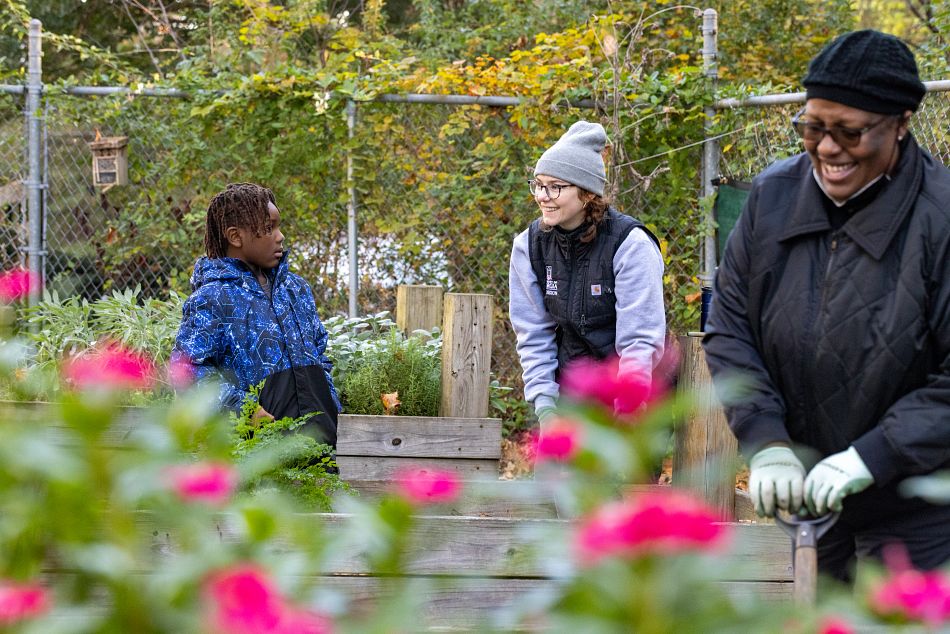Urban gardeners and farmers may have concerns about potentially harmful contaminants in their soils. Before a garden is started, it is important to test the soil for contamination and for qualities such as pH and nutrient availability that impact soil fertility.
A soil contaminant is any element or chemical in the soil at a concentration that could pose a health risk. If people use contaminated areas for gardening, they can be exposed to soil contaminants through the following pathways:
- Eating soil (directly or from soil clinging to vegetables).
- Inhaling dust and volatile compounds.
- Absorbing contaminants through the skin.
- Eating produce that has absorbed contaminants.
In the garden, the greatest risk of exposure is from eating contaminated soil or breathing in contaminated dust. This is especially true for children in the garden who may eat soil through hand-to-mouth play. This danger exists in flower gardens as well as vegetable gardens.
Though contaminants can move from the soil into plants, research has shown that the risk to people eating contaminated plants is slight. Leafy vegetables and fruits accumulate minimal amounts of contaminants; root crops accumulate slightly more.
Soil particles remaining on the vegetables can present a risk. To reduce concerns of exposure from eating plants, wash produce thoroughly before consumption to remove potential soil contamination.
Watch Out for Children
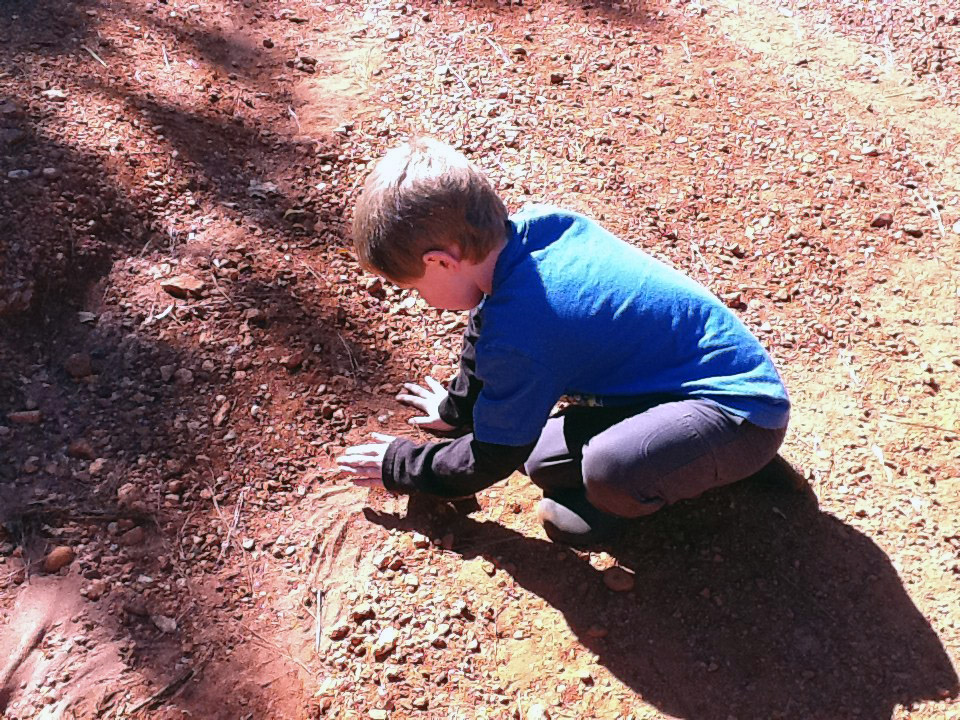
Children who play in the soil are more vulnerable to contaminants than adults. They may put their fingers in their mouths or inhale dust. Due to their size, it takes less of any contaminant to cause health issues. It is best to keep children away from a site that has been untested or is known to be contaminated.
Know the History of the Land
Determine the historical use of the land. Pollutants are often the result of specific land uses. The type of contamination on the land will depend on how the land was previously used. Talk to the landowner and neighbors to see what they know about the previous owners and the site. Table 1 presents examples of contaminants that may accompany specific land uses.
| Examples of Prior Land Use | General Sources of Concern | Specific Contaminant |
|---|---|---|
| Near heavily trafficked roadways | Vehicle exhaust | Lead, polycyclic aromatic hydrocarbons (PAHs) |
| Chemical usage/storage/waste/burning | Industrial sites | Metals, pesticides, petroleum, solvents, etc. |
| Old residential buildings | Paint (before 1978) | Lead |
| Previous farmland; pesticide manufacturing/packaging/shipping | Pesticides | Lead, arsenic, residual pesticides |
| Gas stations or industries with underground storage tanks | Petroleum products | PAHs, solvents (benzene, toluene, xylene) |
| Burning fossil fuels | Power plants | Metals |
| Near decks, fences, playgrounds, railroads | Treated wood | Arsenic, chromium, copper, PAHs |
| Junkyards, landfills, trash/debris piles | Waste site | Metals, petroleum, solvents, etc. |
Test the Soil
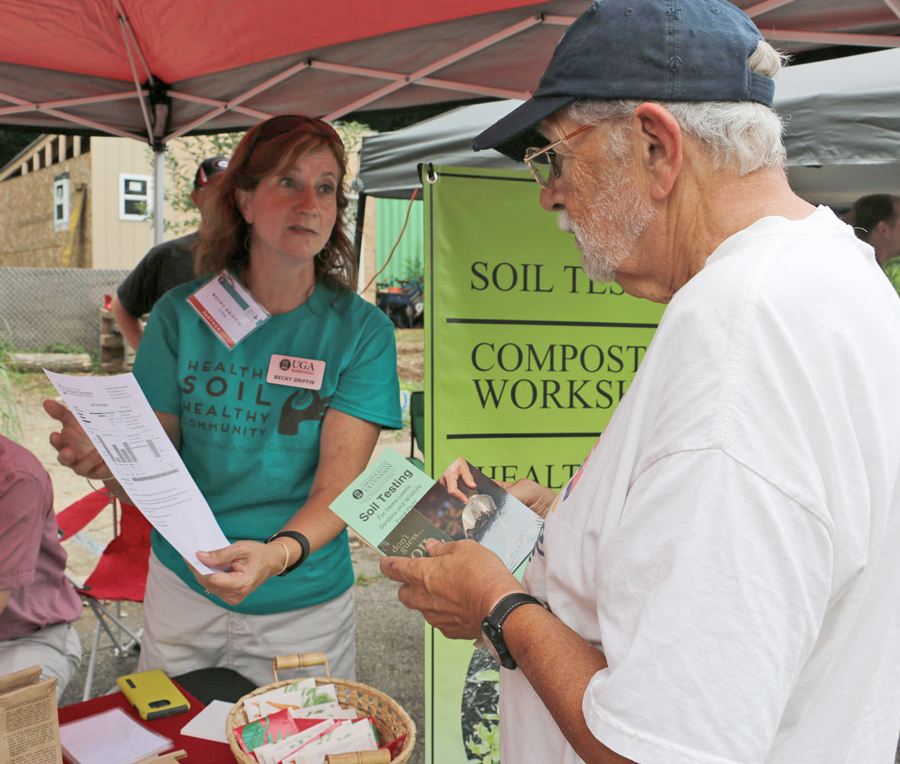
After referring to Table 1, determine if the site has been used for a purpose that puts it at risk of contamination. You will want to complete a soil test for the contaminant associated with the prior use. If there is uncertainty about the history of your soil, tests are available that can screen for a variety of pollutants. The Agricultural and Environmental Services Lab (AESL) at the University of Georgia offers a number of tests that can analyze your soil for harmful metals (tests S13, S17, S42).
Even if there is no reason to suspect soil contamination, a soil test for fertility is still highly recommended. Urban soils often lack needed plant nutrients, and the pH of the soil may need adjustment. The UGA laboratory test S1 is appropriate for gardeners and assesses the soil pH, phosphorus, potassium, calcium, magnesium, zinc, and manganese (see Soil Test Handbook for Georgia).
Useful Links for Soil Tests
Locating your county extension office: https://extension.uga.edu/county-offices.html
UGA Agricultural & Environmental Services Lab: https://aesl.ces.uga.edu/
Laboratory Test Methods: https://aesl.ces.uga.edu/FeeSchedule/
Evaluate the Soil Test Results
Assessing the potential health risks of pollutants in soil can be very difficult. There are many variables that influence health risk (soil texture, mineral content, soil pH, moisture, etc.). Because of this, each individual garden site would need to be extensively researched to definitively conclude its safety. Since this is not a practical approach, we rely on ranges of contaminant soil concentration to estimate the health risks.
Table 2 lists common soil contaminants and the concentration ranges typically associated with the potential health risk for Georgia soil. It is important to note that these are general guidelines and even if contaminants are elevated, it can still be safe to garden when the necessary precautions and safeguards are used.
In high-risk circumstances, it may be wise to find another garden location. Consult your local Extension agent or the AESL to help assist you in making these decisions.
| Contaminant (Element) | Symbol | Low Risk | Potential Risk | High Risk |
|---|---|---|---|---|
| Arsenic | As | < 20 | 20-41 | > 41 |
| Cadmium | Cd | < 2 | 2-39 | > 39 |
| Chromium | Cr | < 100 | 100-1,200 | > 1,200 |
| Copper | Cu | < 100 | 100-1,500 | > 1,500 |
| Lead | Pb | < 75 | 75-400 | > 400 |
| Mercury | Hg | < 0.5 | 0.5-17 | > 17 |
| Selenium | Se | < 2 | 2-36 | > 36 |
| Zinc | Zn | < 100 | 100-2,800 | > 2,800 |
| 1 Values extrapolated from Georgia Environmental Protection Division’s Rules for Hazardous Site Response (Rule 391-3-19-.07). | ||||
Lead is the most common contaminant found in urban soils. These guidelines will reduce the risk from lead exposure:
- If the site has less than 75 parts per million (ppm) lead, then it is safe to grow food directly in the soil.
- If the soil lead levels are 75 to 400 ppm, install a raised bed and/or add a barrier (mulch/plastic) between you and any exposed soil. Avoid growing edible root plants.
- If the soil has greater than 400 ppm of lead, consider relocating the garden to another site.
Best Urban Gardening Practices
- Have your soil tested. Nobody can tell just by looking what the soil issues are.
- Locate gardens away from old painted buildings and roads with heavy vehicle traffic.
- Incorporate or top dress the garden area with uncontaminated soil, compost, manure, or peat moss.
- Adjust soil pH to ~6.5 to minimize absorption of contaminant in plants.
- Create barriers between people and the soil.
- Use mulch to reduce dust and soil contact on people and crops.
- Wear gloves as a barrier between hands and the soil.
- Build raised beds with clean soil to grow food crops in more contaminated areas.
- Never use old treated lumber, railroad ties, or utility poles. They may contain arsenic, chromium, or creosote.
- If you want to grow food organically, then you need to consider that USDA Organic Certification guidelines do not allow any pressure-treated wood products to come in contact with plants grown for food.
- Properly prepare fruits and vegetables from the garden before eating.
- Throw away outer leaves of greens (especially parts closest to the soil).
- Wash all produce in running water before eating.
- Peel root vegetables before washing.
Urban gardening provides countless benefits to communities and individuals. It improves the environment, revitalizes neighborhoods, and allows residents to have direct access to healthy, nutritious food. However, it is important for gardeners to be aware of the risk of soil contamination and to take steps to minimize it.
References
Crozier, C. R., Polizzotto, M., & Bradley, L. (2012). Soil facts: Minimizing risks of soil contaminants in urban gardens (Publication No. AGW-439-78). NCSU Cooperative Extension. https://content.ces.ncsu.edu/minimizing-risks-of-soil-contaminants-in-urban-gardens
Georgia Environmental Protection Division. (2010). Hazardous site response, §391-3-19. https://rules.sos.ga.gov/gac/391-3-19
Kissel, D. E., & Sonon, L. S. (2011). Soil Test Handbook for Georgia (Publication No. SB 62). University of Georgia Cooperative Extension. https://extension.uga.edu/publications/detail.html?number=SB62
Turner, A. H. (2009). Urban agriculture and soil contamination: An introduction to urban gardening. (Practice Guide No. 25). University of Louisville. https://louisville.edu/cepm/pdf-files/pg-25-1
U.S. Environmental Protection Agency. (2011). Brownfields and urban agriculture: Interim guidelines for safe gardening practices (Publication No. EPA 560/S-11/001). https://www.epa.gov/sites/default/files/2015-09/documents/bf_urban_ag.pdf
U.S. Environmental Protection Agency. (2011). Reusing potentially contaminated landscapes: Growing gardens in urban soils (Publication No. EPA 542-F-10-011). https://www.epa.gov/sites/default/files/2014-03/documents/urban_gardening_fina_fact_sheet.pdf
Wortman, S. E., & Lovell, S. T. (2013). Environmental challenges threatening the growth of urban agriculture in the United States. Journal of Environmental Quality, 42(5), 1283–1294. https://doi.org/10.2134/jeq2013.01.0031

